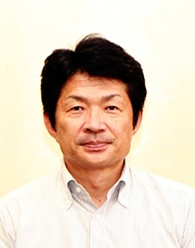IKEYA Nobuyuki
Ph. D. (Meiji University)
Education
1981-1983 Meiji University, M.A., Archaeology.
2008 Obtained history Ph.D. degree from Meiji University.
Employment
2020- present : Professor of Center for obsidian and Lithic Studies, Meiji University
Current Research
■Method for identifying obsidian sources by Energy-dispersive X-ray Spectroscopy (EDXRF).
■History of obsidian use.
■Obsidian transportation crossing the prehitorical time, Japan.
Honors
■Received the 7th Togariishi Jomon Culture Prize, in honor of the advancement of the Jomon culture studies. October 2006, from Chino City, Nagano Prefecture, Japan.
■Received the Shizuoka Culture Prize in 2010. May 2010, from Shizuoka Prefecture, Japan.
■Received the 1st Japanese Archaeological Association Grand Prize, in 2011 in honor of the advancement of obsidian studies. May 2011, from Japanese Archaeological Association, Japan.
■Received the 6th Japan Society for Scientific Studies on Cultural Properties, Excellent Paper Award, in 2012 in honor of the advancement of obsidian circulation studies. June 2012, from Japan Society for Scientific Studies on Cultural Properties, Japan.
■Received the 3th Japanese Paleolithic Research Association Grand Prize, in 2015 in honor of the advanced obsidian research and contribution to Paleolithic studies. June 2016, from Japanese Paleolithic Research Association, Japan.
■Received the 6th Japan Society for Scientific Studies on Cultural Properties, Excellent Paper Award, in 2018 in honor of the advancement of chemical compositional data analysis. June 2018, from Japan Society for Scientific Studies on Cultural Properties, Japan.
Selected Publications
Books
| 2020 | Ikeya, N., Sato, H. (editing and weiting) Paleolithic Culture at the Foot of Mt. Ashitaka. Keibunsha Co., Ltd., P. 416(in Japanese) |
| 2009 | Obsidian Archaeology : Social Structure and its Changes Based on Identifying Obsidian Sources. Shinsensha Co., Ltd., P. 306. Tokyo. (in Japanese) (The thesis for the Ph.D.) |
| 2007 | Sugiyama, K., Ikeya, N. Obsidian Studies for Cultural Changes from Jomon to YayoiⅠ, P. 166. (Private publishing in Japanese) |
| 2005 | Obsidian Went Across the Kuroshio Current : Mitaka-dannma Site. Shinsensha Co., Ltd., P. 93. Tokyo. (in Japanese) |
Selected Monographs and Articles
| 2022 | Otsuka, Y., Ikeya, N., Kudo, M. The transition of obsidian in the use of the Oshima Peninsula during the Epi- Jomon. Natural resource environment and humans 12, pp.51-75.(in Japanese) |
| Kanai, T., Ikeya, N., Suda, Y. Provenance analysis of obsidian artifacts by non-destructive, device independent EDXRF analysis. Scientific studies on cultural properties 85, pp.1-14.(in Japanese) | |
| 2021 | Kanai, T., Ikeya, N., Hosaka, Y., Practical research of obsidian analysis using portable XRF and its application to estimation of obsidian use in the eastern Kofu Basin in the Early Jomon. Bulletin of research institute of cultural properties, Teikyo University 20, pp.147-173.(in Japanese) |
| 2020 | Negishi, Y., Ikeya, N., Sato. H., Source Analysis of the obsidian lithics in the Initial Jomon Period and further implications: Case study of Kamikita and Hachinohe areas. Bulletin of the department of archaeology, the University of Tokyo 33, pp.23-35.(in Japanese) |
| 2019 | Paleolithic pitfall hunting at the foot of Mount Ashitaka and Hakone. Archeaological Journal 734. pp.9-12.(in Japanese) |
| Kaifu, Y., Goto, A., Ikeya N., et.al. Palaeolithic seafaring in East Asia: Testing the bamboo raft hypothesis. ANTIQUITY 372, pp.1424-1441. | |
| 2018 | Kanai, T., Ikeya, N., Hosaka. Y., Obsidian source identification by log-ratio analysis of chemical compositional data. Scientific Studies on Cultural Properties 78, pp.37-50.(in Japanese) |
| 2017 | The world’s oldest return-trip voage: Kozushima obsidian carried across the Pacific at the beginning of Early Upper Paleolithic. Science Journal KAGAKU 87-9, pp.849-854.(in Japanese) |
| Kozushima Island obsidian in the Upper Paleolithic and archaeological proof of sea crossing by HomoSapiens. In: Anzai, M., Practice of the theoretical archeology (theoretical volume), pp.27-54, Doseishiya. (in Japanese) | |
| Kozusima Island obsidian exchange hub sites located on the south-east coastal area of Izu peninsula: analysis of its continuity in the Jomon Period. Nagano prefectural bulletin of archaeology 154, pp.81-90. (in Japanese) | |
| Group migration and cultural change following the Akahoya volcanic ashfall: Identifying the pottery production centers at the beginning of the Early Jomon period of Japan. Quaternary International 442, pp.23-32. | |
| 2015 | Maritime transport of obsidian in Japan during the Upper Paleolithic. In: Kaif, Y., Izuho, M., Goebe, T., Sato, H., Ono, A. (Eds.) Emergence and diversity of Modern Human behavior in Paleolithic Asia. pp.362-375, Texas A&M University Press College Station. |
| 2014 | Identification of archeological obsidian sources in Kanto and Chubu regions (Central Japan) by energy dispersive X-ray fluorescence analysis. In: Ono, A.,Glascock, M. D., Kuzumin, Y. V., Sumida, Y.(Eds.)Methodological issues for characterization and provenance studies of obsidian in Northeast Asia, BAR International Series 2620 pp.111-123, Archaeopress. |
| 2012 | Identifying the sources of Jomon Pottery by EDXRF Analysis : The Border Transgression of the Beginning-Early Jomon Pottery across the Itoigawa-Shizuoka Tectonic Line. Proceedings for the Tenth Anniversary of the Togariishi Jomon Archaeological Museum. pp.30-40. (in Japanese) |
| 2010 | Sugiyama, K., Ikeya, N. Another Circulation System of Kozushima Obsidian in transition period from Jomon to Yayoi : Distribution of Kozushima-Sanukazaki Obsidian. Archaeology and Natural Science vol.60. pp.13-28. (in Japanese with English abstract) |
| Ikeya, N., Togashi, T. Magara, T. Chronology and Locality of Paleolithic Culture : Tokai and Hokuriku Region. Lecture of Japanese Archaeology Vol.1 Paleolithic Period. Aokishoten Co.,Ltd., pp.473-504. Tokyo. (in Japanese) | |
| 2009 | Ikeya, N., Masujima, J. Identifying the sources of Jomon Pottery - West Side or East Side of the Itoigawa-Shizuoka Tectonic Line - by EDXRF Analysis : Based on the Case Study in the Tokai and South Kanto region. Festschrift for the 70th anniversary of Sugiyama Hirohisa’s birth, ‘Archeaological Locality and its historical studies’ pp.41-64. (in Japanese) |
| Pit-Fall Hunting and Human Behavior for Raw Material Acquisition and Stone Tool Production : Focused on Cultural Phase BBⅢ at the Foot of Mt.Ashsitaka and Mt Hakoe. Sunndai Historical Review No.135. pp.71-90. (in Japanese with English abstract) |
|
| 2008 | The Result of Obsidian identifying for Jomon period in East Kanto Region. Chiba Archaeological Studies vol.2. pp.61-91. (in Japanese) |
| 2006 | Co-presence and Competition among Local Groups at the Time of Akahoya Volcanic Ash Fall. Isewan Bay Archaeology vol.20. pp.77-104. (in Japanese) |
Presentations at the International Congress and Workshop
| 2021 | Ikeya, N. The “Kozushima Obsidian Shuttle” across the Pacific and the Migration of Homo sapiens to the Japanese Archipelago. International Obsidian Conference 2021(University of California, Berkeley, online)30 April – 2 May, 2021. |
| 2016 | Transporting Kozushima Island obsidian across the Pacific Ocean at the beginning of early Upper Paleolithic, Japan. International Obsidian Conference, Regional Aeolian Museum Luigi Bernabo Brea, Lipari, Italy. 1-3 June, 2016. |
| 2015 | Emigrations and cultural changes at the beginning of Early Jomon, after the Akahoya volcanic ashfall, Japan. XIX INQUA Congress, Quaternary perspectives on climate change, Natural hazards and civilization, oral[H31]Human behavioral variability in prehistoric Eurasia, Nagoya Congress Center, 26 July - 2 August, 2015. |
| 2013 | Maritime transportation of obsidian across the Pacific during the early Upper Paleolithic Japan, Stories written in stone’ International symposium on chart and other knappable materials (Session8: Methodological issues of obsidian and a new perspective of archaeological obsidian), AIC University of Iasi, Romania, 23 August, 2013. |



